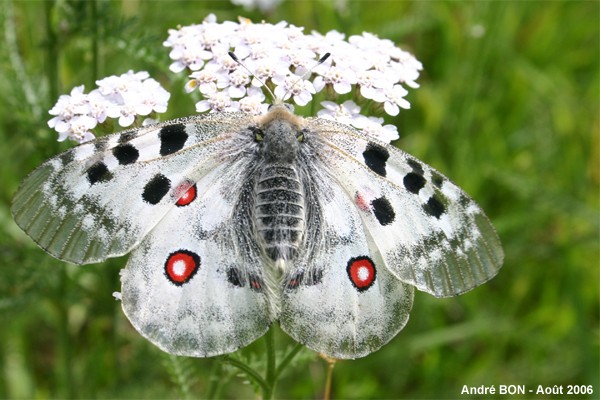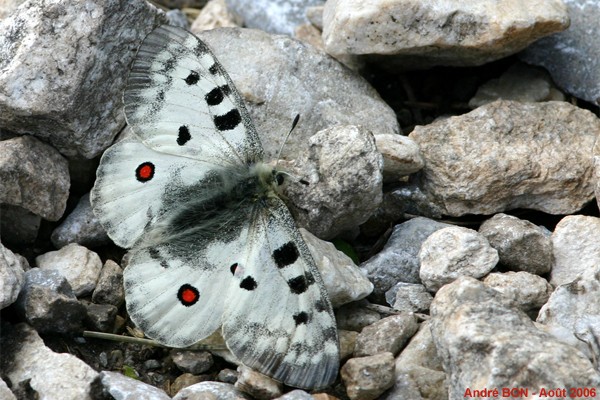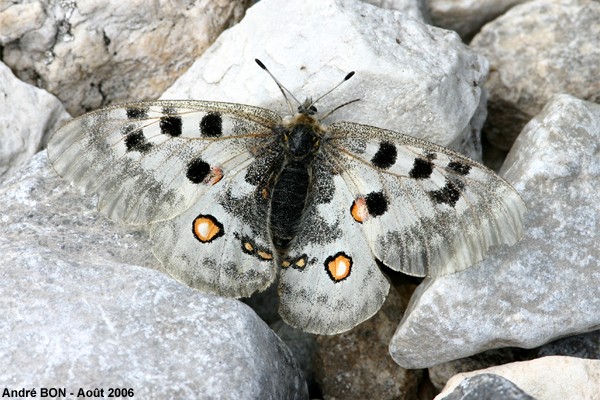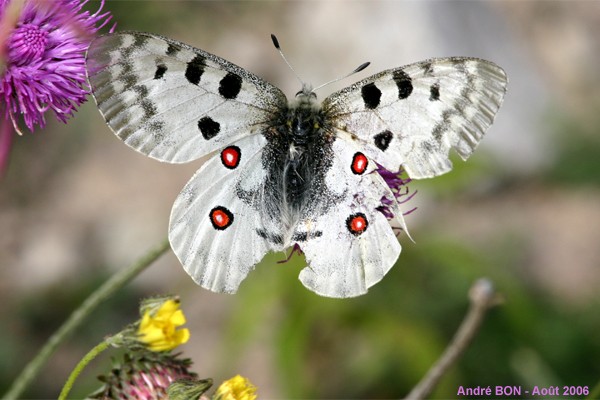



| Apollo (Parnassius apollo (Linnaeus, 1758)) |




|
|
Scientific name: Parnassius apollo (Linnaeus, 1758) Common name: Apollo Other names: Mountain Apollo French name: Apollon, Grand Apollon Order: Lepidoptera Suborder: Rhopalocera Family: Papilionidae Subfamily: Parnassiinae Wingspan: 70-84 mm. Biotope: Open mountain areas, between 400 and 2500m, with cold winters and sunny summers. Of course, host plants are needed. This species is currently disappearing from the lower altitudes of its range. Geographic area: Western Europe mountains to the Balkans. Flight time: May to September depending of the altitude. Number of generations : 1 Caterpillar: Dark brown with orange marks. Host plant: Stonecrops (Sedum sp.), Houseleeks (Sempervivum sp). et Saxifrages (Saxifraga sp.). |
Apollos are large butterflies showing white wings with black marks. The outer edges of the wings are clear with no scales. The hindwings show two white-centred red or orange spots circled with black. The antennae are grey. There is a possible confusion with the Small Apollo which is a smaller size. The Small Apollo has red marks near the apex of the forewings. Its antennae are black with white stripes. Apollos are very variable and have been classified in numerous subspecies. Caterpillars overwinter in the eggs at their first development step. One feature of the Apollo is that the male deposits a structure calls sphragis on the female's abdomen while mating. This prevents any further mating of this female with another male. |
| [To know more about the Apollo] [Next picture] [Top] |

|
You can easily get very close to Apollos while they are gathering nectar on mountain flowers. You can even touch them with your finger. |
| [To know more about the Apollo] [Next picture] [Previous picture] [Top] |

|
You can mainly observe Apollos while they are gathering nectar on mountain flowers or landed on stones on the ground. |
| [To know more about the Apollo] [Next picture] [Previous picture] [Top] |

|
According to my small butterfly guidebook, the marks on the hindwings match a female Apollo. |
| [To know more about the Apollo] [Previous picture] [Top] |

|
We often observe many butterflies with damaged wings. We need to come earlier in the season to take beautiful pictures. |